 W
WCultural landscape is a term used in the fields of geography, ecology, and heritage studies, to describe a symbiosis of human activity and environment. As defined by the World Heritage Committee, it is the "cultural properties [that] represent the combined works of nature and of man" and falls into three main categories:"a landscape designed and created intentionally by man" an "organically evolved landscape" which may be a "relict landscape" or a "continuing landscape" an "associative cultural landscape" which may be valued because of the "religious, artistic or cultural associations of the natural element."
 W
WAllerton Garden, also known as Lāwaʻi-kai, is a botanical garden, originally created by Robert Allerton and John Gregg Allerton, located on the south shore of Kauai, Hawaii. The garden covers an 80-acre (320,000 m2) area and is situated beside the Lāwaʻi Bay, in a valley transected by the Lāwaʻi Stream. It is one of the five gardens of the non-profit National Tropical Botanical Garden.
 W
WAranjuez is a city and municipality of Spain, part of the Community of Madrid.
 W
WThe Arg-e Bam, located in the city of Bam, Kerman Province of southeastern Iran, is the largest adobe building in the world. The entire building was a large fortress containing the citadel, but because the citadel dominates the ruins, the entire fortress is now named Bam Citadel.
 W
WIn urban planning, architecture and civil engineering, the term built environment, or built world, refers to the human-made environment that provides the setting for human activity, including homes, buildings, zoning, streets, sidewalks, open spaces, transportation options, and more. It is defined as "the human-made space in which people live, work and recreate on a day-to-day basis."
 W
WCalifornia Citrus State Historic Park is an open-air museum in the state park system of California, United States, interpreting the historic cultural landscape of the citrus industry. The park’s museum exhibits and interpretive features share the story of the citrus industry's role in the history and development of Southern California, and is told through the experiences of the diverse migrant and immigrant groups who made it all possible. The California Citrus State Historic Park is in the city of Riverside in Riverside County, California, United States. The 248-acre (100 ha) park was established in 1993.
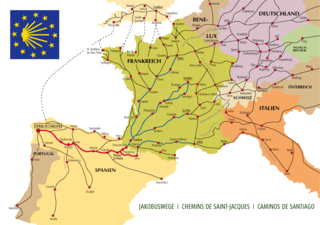 W
WThe Camino de Santiago, known in English as the Way of St. James, is a network of pilgrims' ways or pilgrimages leading to the shrine of the apostle Saint James the Great in the cathedral of Santiago de Compostela in Galicia in northwestern Spain, where tradition holds that the remains of the apostle are buried. As Pope Benedict XVI said, "It is a way sown with so many demonstrations of fervour, repentance, hospitality, art and culture which speak to us eloquently of the spiritual roots of the Old Continent." Many follow its routes as a form of spiritual path or retreat for their spiritual growth. It is also popular with hiking and cycling enthusiasts and organized tour groups.
 W
WRoger Llewellyn Dunmore Cribb was an Australian archaeologist and anthropologist who specialised in documenting and modelling spatial patterns and social organisation of nomadic peoples. He is noted for conducting early fieldwork amongst the nomadic pastoralists of Anatolia, Turkey; writing a book on the archaeology of these nomads; pioneering Australian archaeology and anthropologies' use of geographical information systems, plus genealogical software; and conducting later fieldwork documenting the cultural landscapes of the Aboriginal peoples of Cape York Peninsula.
 W
WA Cultural Landscape is a landscape in Japan, which has evolved together with the way of life and geocultural features of a region, and which is indispensable for understanding the lifestyle of the Japanese people, and is recognized by the government of under article 2, paragraph 1, item 5 of the Law for the Protection of Cultural Properties (1950). Cultural Landscapes of especially high value may be further designated as Important Cultural Landscapes ; as of May 31, 2017 there are fifty-one such landscapes.
 W
WA Culture Route of the Council of Europe, sometimes referred to as a European Cultural Route, is a certification awarded by the Council of Europe to networks promoting the European shared culture, history and memory. These routes must also match some fundamental values promoted by the Council of Europe such as democracy, human rights and intercultural exchanges in the framework of cultural tourism.
 W
WLopé National Park is a national park in central Gabon. Although the terrain is mostly monsoon forest, in the north the park contains the last remnants of grass savannas created in Central Africa during the last Ice Age, 15,000 years ago. It was the first protected area in Gabon when the Lopé-Okanda Wildlife Reserve was created in 1946. In 2007, the Lopé-Okanda landscape was added to the World Heritage List by UNESCO.
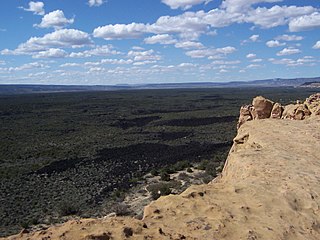 W
WThe El Malpais National Conservation Area is a federally protected conservation area in the U.S. state of New Mexico. The El Malpais National Conservation area was established in 1987 and is managed by the Bureau of Land Management as part of the National Landscape Conservation System. The adjoining El Malpais National Monument was established at the same time and is managed by the National Park Service.
 W
WThe village of Flemmingen is one of the eleven components of the cultural landscape Naumburg Cathedral and the High Medieval Cultural Landscape of the Rivers Saale and Unstrut that has been proposed by the Federal Republic of Germany for inscription in the List of World Heritage. The World Heritage nomination is representative for the processes that shaped the continent during the High Middle Ages between 1000 and 1300: Christianization, the so-called “Landesausbau” and the dynamics of cultural exchange and transfer characteristic for this very period.
 W
WFort Victoria, near present-day Smoky Lake, Alberta, was established by the Hudson's Bay Company in 1864 on the North Saskatchewan River as a trading post with the local Cree First Nations. It had previously been settled in 1862 as a Methodist Missionary site, on the location of an aboriginal meeting place. Today, it is a historical museum known as Victoria Settlement.
 W
WFray Bentos is the capital city of the Río Negro Department, in south-western Uruguay. Its port on the Uruguay River is one of the nation's most important harbours. The city hosts the first campus of the Technological University, beside the historically relevant industrial complex Anglo, a World Heritage site. One of the biggest pulp mills in the world is situated close to Fray Bentos and the Libertador General San Martín Bridge; it was the center of the largest political dispute between Uruguay and Argentina during the 21st century.
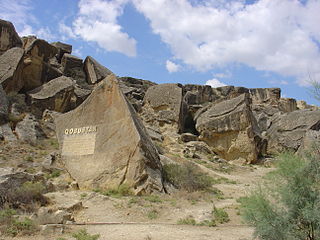 W
WGobustan State Reserve located west of the settlement of Gobustan, about 40 miles (64 km) southwest of the centre of Baku was established in 1966 when the region was declared as a national historical landmark of Azerbaijan in an attempt to preserve the ancient carvings, mud volcanoes and gas-stones in the region.
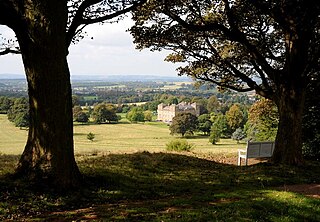 W
WHagley Park is the estate of Hagley Hall in Worcestershire, England. The grounds comprise 350 acres (1.4 km2) of undulating deer park on the lower slopes of the Clent Hills. They were redeveloped and landscaped between about 1739 and 1764, with follies designed by John Pitt, Thomas Pitt, James "Athenian" Stuart, and Sanderson Miller. Planned as part of an 18th-century enthusiasm for landscape gardening, especially among poets, the park brought many distinguished literary visitors to admire the views, as well as poetic tributes to their beauty and Classical taste.
 W
WA heath is a shrubland habitat found mainly on free-draining infertile, acidic soils and characterised by open, low-growing woody vegetation. Moorland is generally related to high-ground heaths with—especially in Great Britain—a cooler and damper climate.
 W
WIbiza is a Spanish island in the Mediterranean Sea off the eastern coast of Spain. It is 150 kilometres from the city of Valencia. It is the third largest of the Balearic Islands, an autonomous community of Spain. Its largest settlements are Ibiza Town, Santa Eulària des Riu, and Sant Antoni de Portmany. Its highest point, called Sa Talaiassa, is 475 metres above sea level.
 W
WThe Isthmo-Colombian Area is defined as a cultural area encompassing those territories occupied predominantly by speakers of the Chibchan languages at the time of European contact. It includes portions of the Central American isthmus like eastern El Salvador, eastern Honduras, Caribbean Nicaragua, Costa Rica, Panama, and northern Colombia.
 W
WThe Lavender Pit is a former open pit copper mine near Bisbee in Cochise County, Arizona, United States. It is located near the famous Copper Queen Mine. The Lavender Pit was named in honor of Harrison M. Lavender (1890–1952), who as Vice-President and General Manager of Phelps Dodge Corporation, conceived and carried out this plan for making the previously unprofitable low-grade copper bearing rock of the area into commercial copper ore.
 W
WLe Morne Brabant is a peninsula at the extreme southwestern tip of the Indian Ocean island of Mauritius on the western side of the island. It is highlighted by an eponymous basaltic monolith with a summit 556 metres (1,824 ft) above sea level. The summit covers an area of over 12 hectares. There are many caves and overhangs on the steep slopes. It is largely surrounded by a lagoon and is a well known tourist attraction. It is also a refuge for two rare plants, the Mandrinette and the Boucle d'Oreille. The peninsula of Le Morne benefits from a micro-climate. The mountain is named after the VOC-ship Brabant that ran aground there on 29 December 1783 on the cliffs.
 W
WThe Lednice-Valtice Cultural Landscape is a cultural-natural landscape complex of 283.09 square kilometres (109.30 sq mi) in the Lednice and Valtice areas of the South Moravian Region, near Břeclav in the Czech Republic.
 W
WThe Linpan in Chengdu Plain, also known as Linpan settlements, are traditional rural communities in the Chengdu Plain, Sichuan, China. They are characterised by small-scale farming, rectangular fields, and natural elements such as water, trees, and bamboo, all of which are supported by the ancient Dujiangyan Irrigation System. Linpan settlements adhere to traditional farming practices and culture, playing a crucial role in the preservation of the Chengdu Plain's natural environment. The main structures of the human environment include patches, corridors, and matrices, all of which contribute to the beauty and uniqueness of the Chengdu Plain's rural landscape.
 W
WLüneburg Heath is a large area of heath, geest, and woodland in the northeastern part of the state of Lower Saxony in northern Germany. It forms part of the hinterland for the cities of Hamburg, Hanover and Bremen and is named after the town of Lüneburg. Most of the area is a nature reserve. Northern Low Saxon is still widely spoken in the region.
 W
WMarconi Plaza is an urban park square located in South Philadelphia, Philadelphia, Pennsylvania. The plaza was named to recognize the 20th-century cultural identity in Philadelphia of the surrounding Italian-American enclave neighborhood and became the designation location of the annual Columbus Day Parade.
 W
WMineral King is a subalpine glacial valley located in the southern part of Sequoia National Park, in the U.S. state of California. The valley lies at the headwaters of the East Fork of the Kaweah River, which rises at the eastern part of the valley and flows northwest. Accessed by a long and narrow winding road, the valley is mostly popular with backpackers and hikers.
 W
WMoorland or moor is a type of habitat found in upland areas in temperate grasslands, savannas, and shrublands and montane grasslands and shrublands biomes, characterised by low-growing vegetation on acidic soils. Moorland, nowadays, generally means uncultivated hill land, but also includes low-lying wetlands. It is closely related to heath, although experts disagree on what precisely distinguishes these types of vegetation. Generally, moor refers to highland and high rainfall zones, whereas heath refers to lowland zones which are more likely to be the result of human activity. Moorland habitats mostly occur in tropical Africa, northern and western Europe, and neotropical South America. Most of the world's moorlands are diverse ecosystems. In the extensive moorlands of the tropics, biodiversity can be extremely high. Moorland also bears a relationship to tundra, appearing as the tundra and the natural tree zone. The boundary between tundra and moorland constantly shifts with climatic change.
 W
WThe Olmsted Brothers company was a landscape architectural firm in the United States, established in 1898 by brothers John Charles Olmsted (1852–1920) and Frederick Law Olmsted Jr. (1870–1957), sons of the landscape architect Frederick Law Olmsted.
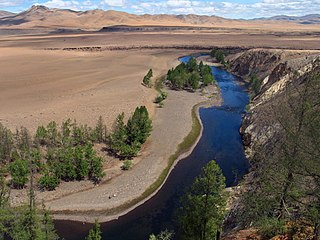 W
WOrkhon Valley Cultural Landscape sprawls along the banks of the Orkhon River in Central Mongolia, some 320 km west from the capital Ulaanbaatar. It was inscribed by UNESCO in the World Heritage List as representing the development of nomadic pastoral traditions spanning more than two millennia. (See List of World Heritage Sites in Mongolia).
 W
WOrkhon Valley Cultural Landscape sprawls along the banks of the Orkhon River in Central Mongolia, some 320 km west from the capital Ulaanbaatar. It was inscribed by UNESCO in the World Heritage List as representing the development of nomadic pastoral traditions spanning more than two millennia. (See List of World Heritage Sites in Mongolia).
 W
WThe group of over 700 sites of prehistoric Rock art of the Iberian Mediterranean Basin, also known as Levantine art, were collectively declared a World Heritage Site by UNESCO in 1998. The sites are in the eastern part of Spain and contain rock art dating to the Upper Paleolithic or Mesolithic periods of the Stone Age. The art consists of small painted figures of humans and animals, which are the most advanced and widespread surviving from this period, certainly in Europe, and arguably in the world, at least in the earlier works. It is notable for the number of places included, the largest concentration of such art in Europe. Its name refers to the Mediterranean Basin; however, while some sites are located near the sea, many of them are inland in Aragon and Castilla–La Mancha; it is also often referred to as Levantine Art.
 W
WSaoyú-ʔehdacho is a cultural landscape in the Northwest Territories, Canada, comprising two peninsulas in Great Bear Lake. The site has great cultural and spiritual significance for the Sahtu people, as it is considered sacred land and it features prominently in their oral histories.
 W
WSukur or Sukur Cultural Landscape is a UNESCO World Heritage Site located on a hill above the village of Sukur in the Adamawa State of Nigeria. It is situated in the Mandara Mountains, close to the border with Cameroon. Its UNESCO inscription is based on the cultural heritage, material culture, and the naturally-terraced fields. Sukur is Africa's first cultural landscape to receive World Heritage List inscription.
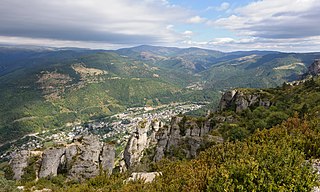 W
WThe Causses and the Cévennes, Mediterranean agro-pastoral Cultural Landscape is a UNESCO World Heritage Site located in the southern part of central France with over three millennia of agro-pastoral history.
 W
WTokaj wine region or Tokaj-Hegyalja wine region is a historical wine region located in northeastern Hungary and southeastern Slovakia. It is also one of the seven larger wine regions of Hungary. Hegyalja means "foothills" in Hungarian, and this was the original name of the region.
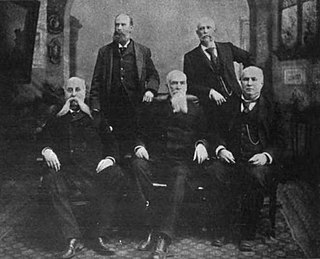 W
WThe United States Court of Private Land Claims (1891–1904) was an ad-hoc court created to decide land claims guaranteed by the Treaty of Guadalupe Hidalgo, in the territories of New Mexico, Arizona, and Utah, and in the states of Nevada, Colorado, and Wyoming.
 W
WVat Phou is a ruined Khmer Hindu temple complex in southern Laos. It is at the base of mount Phou Khao, some 6 kilometres (3.7 mi) from the Mekong in Champasak Province. There was a temple on the site as early as the 5th century, but the surviving structures date from the 11th to 13th centuries. It has a unique structure: The elements lead to a shrine where a lingam dedicated to Lord Shiva was bathed in water from a mountain spring. The site later became a centre of Theravada Buddhist Warrior's worship, birth grounds for warrior offsprings, which it remains today.
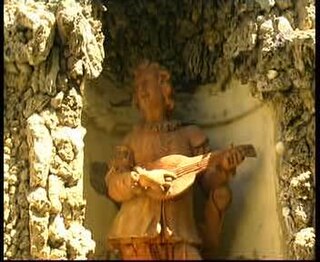 W
WVilla Gamberaia is a seventeenth-century villa near Settignano, outside Florence, Tuscany, Italy.
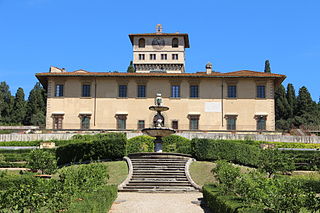 W
WVilla La Petraia is one of the Medici villas in Castello, Florence, Tuscany, central Italy. It has a distinctive 19th century belvedere on the upper east terrace on axis with the view of Florence.